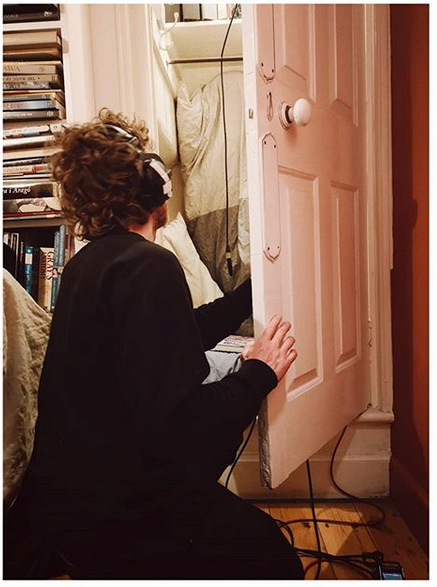denoising your home recordings
The town is quiet, but your home is still full of noise
It’s virtually impossible to escape the noise of the town/city but right now1 things are quieter than ever. Sadly, even though the noise of cars, the rumble of lorries and busses is at a record minimum, your house still makes an awful lot of noise.
absorbing reflections
Sure you can do stuff like I did recently where I filled a cupboard with duvets left the door only slightly ajar and recorded some pretty quiet sounds. Still, the spatial signature of the room was there, plus of-course, the noise of my microphones and ZoomF8 trying to get the gain I needed without inducing too much noise.
I could tell things about the reverberation in the space because I could hear a difference as I opened the door more or tried to close it.

de-NOISE
Often, we simply have to accept that our recordings will have noise in them. EQ will help to filter out the most objectionable aspects of the spectrum and then we can do things in our mixes to manage the noise such that it is masked or embraced.
However, when we want to clean things up as best we can, then de-noising tools can help, provided you’re prepared to accept that these are lossy and will degrade the information in your source material too. Be aware that scooping out chunks of the spectrum will also mean parts of your sound world will also be compromised and you have to take a very careful listening line between reducing system and atmospheric noise against the detail that you might chisel away from the thing you’re trying to actually use.
Tools
Isotope’s gear is the best place to start if you have a budget. Their de-noising tools are excellent and they are better than the sox-based solution I’m proposing below. However, Isotope costs money, sox costs a bit of time learning and is free, also you can do some batch processing and deal with loads of stuff all at once which always feels good if you’re that way inclined.
Introducing SoX
Actually, I’m not going to bother doing that, you’ve either got it installed and use it, or you don’t.
If you have, proceed.
instructions
- find a noisy part of your file without any source material in it
- export that from your DAW
Download the sound above if you like here.
- open your terminal or cmd prompt (with admin privileges)
- create a noise profile in
sox sox noiseSection.wav -n noiseprof noiseProfile.prof- This will produce a file called
noiseProfile.profin the directory you are working in.
Download the noise profile I made with the above command here.
- Now get a bounce of your noisy source material from your DAW
- Then run a command like this
sox noisyFile.wav cleanedUp.wav noisered noiseProfile.prof 0.1- You’ll get something like this:
Next, listen. This is very important. Noise reduction is removing stuff from your file and you’ll hear the destructive consequences easily. They’re clearly there in the above segment and you have to decide the extent to which you are prepared to tolerate these issues in the wider mix.
You have to experiment with the 0.1 setting to work out how much you’re prepared to loose in order to reduce the noise in your recording.
Explanation of the sox command
Let me just explain what that command above is doing
sox dirtySource.wav cleanedUp.wavcalls the input file and sets the name of the output file-n noiseprofinvokes the noise profile algorithm in SoXyourNoiseProfile.prof 0.1calls the noise profile file that you just made and applies it at10%- you can now experiment with this
0.1factor to see how far you can push things.
end of March 2020.↩︎